Barcelona, cities into the city. History
The city of Barcelona offers the visitor a rich and eclectic architecture. Here you can read a brief general description of the main periods of history that have clearly influenced its architecture and structure. You will also find a list of the most important buildings and monuments. When you visit Barcelona, you will discover buildings of less known or even unknown architects that will also surprise you.
- The Roman city
Barcino, the first Roman township, was founded at the end of the first century B.C. However the name Barcino dates from an earlier settlement possibly dating from the first half of the 1st millennium B.C.. Roman Barcino was a small city of about 100 hectares bounded by walls 2 metres thick. The walls were strengthened and the height increased in the 3rd century A.D.. Impressive stretches of the walls remain notably parallel to Via Laietana at Plaça Ramon Berenguer. To the right of the cathedral, twin towers of the Portal de l'Angel flank the entrance to Carrer del Bisbe (note: street names are shown in italic and Catalan - Carrer is Catalan for street). The lower sections of these semi-circular towers are Roman. Much else remains buried under the medieval city. The Roman forum is believed to lie under the Plaça Sant Jaume. Nearby, at number 10 Carrer del Paradis, three columns of the Temple of Augustus can be seen in their original position, well below the present street level. Clearly a Roman back-water, Barcelona's periods of glory were still to come. Metro: Jaume I (Line 4). .
- The medieval city
By the end of the 13th century Catalunya had grown rich on exports to the rest of the Mediterranean and as far as Flanders. This area of the city is known as the Barri Gòtic (Catalan), Barrio Gótico (Spanish) or Gothic Quarter.
- The modern city
In the 19th century, two great events shaped the present Barcelona. In 1854 the Bourbon walls, built following the surrender to Felipe V in 1714, were torn down. This allowed the city the possibility to expand. In 1859 a competition for a town plan was won by Idelfons Cerdà, an engineer rather than an architect. Cerdà's plan was an uncompromising grid of streets with three great avenues cutting across. Thus we have the layout of the present day Eixample (enlargement). Cerdà's stroke of genius was to cut the corners of each block at a 45º angle, to make small squares at the intersections which give light, space and air to what might have been an oppressive grid-iron. It was not until the end of the century that work seriously started on filling in the grid with buildings. Fate allowed the happy conjunction of rich patrons, architects of genius, and unsurpassed craftsmanship. In the years before and after the start of the 20th century, Barcelona produced its version of art nouveau - modernisme. Antoni Gaudí, Domènech i Montaner y Josep Puig i Cadafalch were the principal exponents of Catalán Modernism.
- The olympic city
From the designation of Barcelona as a city to host the 1992 Olympic Games, the city underwent profound changes in several of its districts. The changes were more evident in the district of Sants-Montjuïc, where the most important sports facilities were built and on the seafront: Barcelona, although hard to believe, lived with its back to the sea. With the Olympic Games, it opened completely to the Mediterranean.
Emblematic buildings and monuments of Barcelona
-
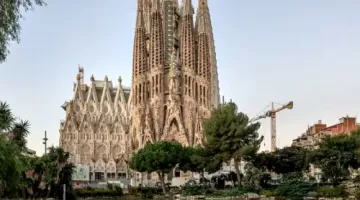 Modernist buildings & monumentsEixample Sagrada FamiliaThe Basilica of the Sagrada Familia is the most famous work of Antoni Gaudí (Reus, 1852 - Barcelona, 1926) and the clearest exponent of his…
Modernist buildings & monumentsEixample Sagrada FamiliaThe Basilica of the Sagrada Familia is the most famous work of Antoni Gaudí (Reus, 1852 - Barcelona, 1926) and the clearest exponent of his…
-
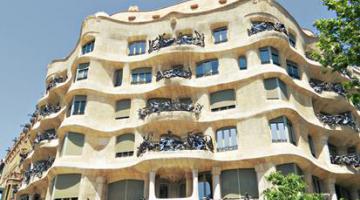 Modernist buildings & monumentsEixample DretaThis fantasy in stone appears to have been carved out of the living rock, hence its nickname "La Pedrera - the quarry".
Modernist buildings & monumentsEixample DretaThis fantasy in stone appears to have been carved out of the living rock, hence its nickname "La Pedrera - the quarry".
-
 Modernist buildings & monumentsEixample EsquerraThis building built between 1904 and 1906 is a fantastic combination of colors and forms located on Passeig de Gràcia of Barcelona, on the island of…
Modernist buildings & monumentsEixample EsquerraThis building built between 1904 and 1906 is a fantastic combination of colors and forms located on Passeig de Gràcia of Barcelona, on the island of…
-
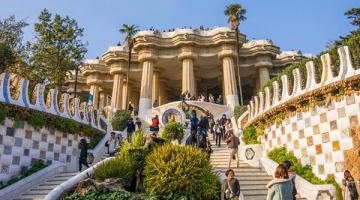 Modernist buildings & monumentsGràciaPark Güell (1900-1905), initially conceived as an English-style garden city, is perhaps the most unique of the many works that Eusebi Güell…
Modernist buildings & monumentsGràciaPark Güell (1900-1905), initially conceived as an English-style garden city, is perhaps the most unique of the many works that Eusebi Güell…
-
 Medieval buildings & monumentsCiutat Vella - Barri GòticThe Cathedral of Santa Creu and Santa Eulàlia of Barcelona was built between the years 1317-1441 on the old Romanesque cathedral, but we have to go…
Medieval buildings & monumentsCiutat Vella - Barri GòticThe Cathedral of Santa Creu and Santa Eulàlia of Barcelona was built between the years 1317-1441 on the old Romanesque cathedral, but we have to go…
-
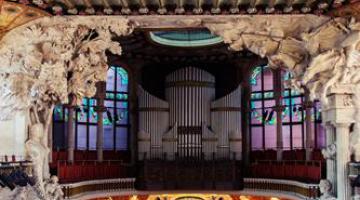 Modernist buildings & monumentsCiutat Vella - La Ribera / BornThe Palau de la Música Catalana, in addition to being an authentic palace of music, is a modernist building of great beauty for its ceramics,…
Modernist buildings & monumentsCiutat Vella - La Ribera / BornThe Palau de la Música Catalana, in addition to being an authentic palace of music, is a modernist building of great beauty for its ceramics,…
-
 Modernist buildings & monumentsEixample DretaThe Sant Pau Art Nouveau Site by the architect Lluís Domènech i Montaner housed a hospital until 2009: the Hospit
Modernist buildings & monumentsEixample DretaThe Sant Pau Art Nouveau Site by the architect Lluís Domènech i Montaner housed a hospital until 2009: the Hospit
-
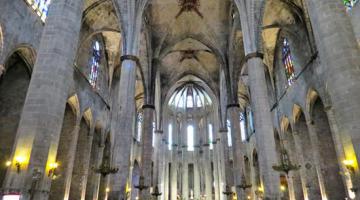 Medieval buildings & monumentsCiutat Vella - La Ribera / BornThe exterior of the Basilica of Santa Maria del Mar (1329-1383) offers a compact look that does not convey what we will find insid
Medieval buildings & monumentsCiutat Vella - La Ribera / BornThe exterior of the Basilica of Santa Maria del Mar (1329-1383) offers a compact look that does not convey what we will find insid
-
 Modernist buildings & monumentsEixample DretaThe Casa Terrades, better known as the Casa de les Punxes, was designed by the modernist architect Josep Puig i Cadafalch<
Modernist buildings & monumentsEixample DretaThe Casa Terrades, better known as the Casa de les Punxes, was designed by the modernist architect Josep Puig i Cadafalch<
-
 Other buildings and emblematic monumentsSants MontjuïcThe Poble Espanyol is an open-air museum that was built in 1929 on the occasion of the Barcelona International Exhibition.
Other buildings and emblematic monumentsSants MontjuïcThe Poble Espanyol is an open-air museum that was built in 1929 on the occasion of the Barcelona International Exhibition.
-
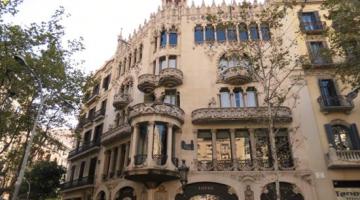 Modernist buildings & monumentsEixample DretaCasa Lleó i Morera (1905), located in the famous block of discord named for the controversy that arose when five buildings of very
Modernist buildings & monumentsEixample DretaCasa Lleó i Morera (1905), located in the famous block of discord named for the controversy that arose when five buildings of very
-
 Modernist buildings & monumentsEixample DretaCasa Amatller is a modernist building located on the Passeig de Gràcia in Barcelona next to
Modernist buildings & monumentsEixample DretaCasa Amatller is a modernist building located on the Passeig de Gràcia in Barcelona next to
-
 New symbols of the citySant MartíThe Glòries Tower, former Agbar Tower, is the third tallest building in Barcelona with 142 meters and 34 floors, after the Hotel Arts and the Mapfre…
New symbols of the citySant MartíThe Glòries Tower, former Agbar Tower, is the third tallest building in Barcelona with 142 meters and 34 floors, after the Hotel Arts and the Mapfre…
-
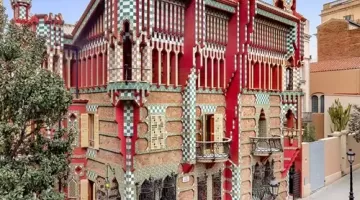 Modernist buildings & monumentsGràciaThe Casa Vicens (1883-1888), a private house, was built between 1883 and 1888 for the ceramics industrialist Manuel Vicens i Monta
Modernist buildings & monumentsGràciaThe Casa Vicens (1883-1888), a private house, was built between 1883 and 1888 for the ceramics industrialist Manuel Vicens i Monta
-
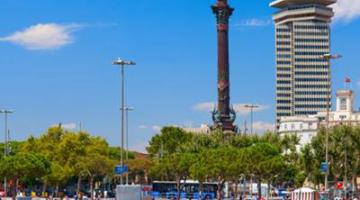 Other buildings and emblematic monumentsCiutat Vella - El RavalColumbus monument was inaugurated in 1888 on the occasion of the Universal Exposition...
Other buildings and emblematic monumentsCiutat Vella - El RavalColumbus monument was inaugurated in 1888 on the occasion of the Universal Exposition...
-
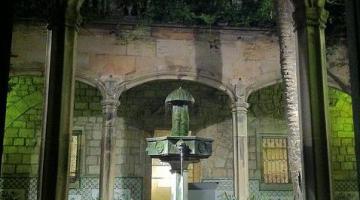 Medieval buildings & monumentsCiutat Vella - Barri GòticNext to the Roman city wall is the entrance to the house of the Archdeacon (Casa del Arcediano) from the XII.
Medieval buildings & monumentsCiutat Vella - Barri GòticNext to the Roman city wall is the entrance to the house of the Archdeacon (Casa del Arcediano) from the XII.
-
 Other buildings and emblematic monumentsCiutat Vella - El RavalThe Gran Teatro del Liceo in Barcelona, dating from 1847, is located on the Ramblas, and regarded as an institution in the city fo
Other buildings and emblematic monumentsCiutat Vella - El RavalThe Gran Teatro del Liceo in Barcelona, dating from 1847, is located on the Ramblas, and regarded as an institution in the city fo
-
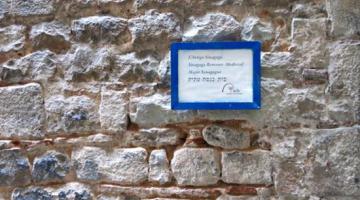 Medieval buildings & monumentsCiutat Vella - Barri GòticA Jewish community lived in the El Call quarter between the twelfth and fourteenth centuries.
Medieval buildings & monumentsCiutat Vella - Barri GòticA Jewish community lived in the El Call quarter between the twelfth and fourteenth centuries.
-
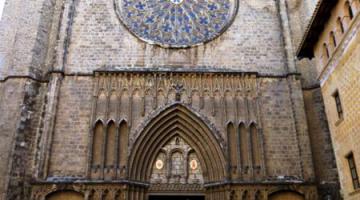 Medieval buildings & monumentsCiutat Vella - Barri GòticThere are some indications that the origins of the Basilica of Santa María del Pi are in the 5th century.
Medieval buildings & monumentsCiutat Vella - Barri GòticThere are some indications that the origins of the Basilica of Santa María del Pi are in the 5th century.
-
 Modernist buildings & monumentsCiutat Vella - Barri GòticEls Quatre Gats ist a bar and restaurant (1895-1896) designed by the modernist architect Josep Puig i Cadafalch a
Modernist buildings & monumentsCiutat Vella - Barri GòticEls Quatre Gats ist a bar and restaurant (1895-1896) designed by the modernist architect Josep Puig i Cadafalch a
-
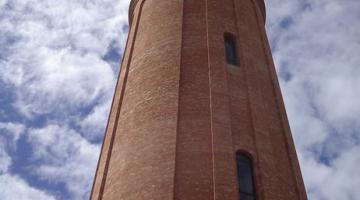 Other buildings and emblematic monumentsPoblenouThe Water Tower del Besos was built in the 1880s funded by industrialist Xavier Camps and with the project by the architect
Other buildings and emblematic monumentsPoblenouThe Water Tower del Besos was built in the 1880s funded by industrialist Xavier Camps and with the project by the architect
-
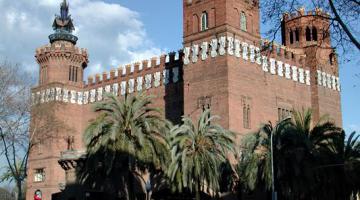 Modernist buildings & monumentsCiutat Vella - La Ribera / BornThe Castell dels Tres Dragons (Castle of the Three Dragons), created by the architect Lluís Domènech i Montaner,
Modernist buildings & monumentsCiutat Vella - La Ribera / BornThe Castell dels Tres Dragons (Castle of the Three Dragons), created by the architect Lluís Domènech i Montaner,
-
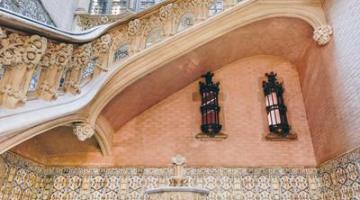 Modernist buildings & monumentsEixample DretaThe Palau del Baró de Quadras as we know it today, was created from a great renovation of a previous building.
Modernist buildings & monumentsEixample DretaThe Palau del Baró de Quadras as we know it today, was created from a great renovation of a previous building.
-
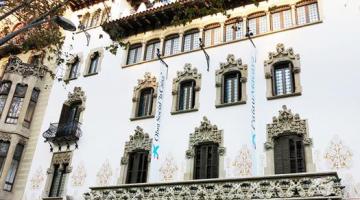 Modernist buildings & monumentsEixample DretaElegant mansion (1901) with a large patio, designed by the architect Josep Puig i Cadafalch.
Modernist buildings & monumentsEixample DretaElegant mansion (1901) with a large patio, designed by the architect Josep Puig i Cadafalch.
-
 Medieval buildings & monumentsCiutat Vella - La Ribera / BornLa Llotja de Barcelona (Stock Exchange) is one of the most unknown treasures of Barcelona's civil Gothic.
Medieval buildings & monumentsCiutat Vella - La Ribera / BornLa Llotja de Barcelona (Stock Exchange) is one of the most unknown treasures of Barcelona's civil Gothic.
-
 Modernist buildings & monumentsCiutat Vella - El RavalThe Palau Güell, an urban residence built between 1886 and 1890 for the family of Eusebi Güell Bacigalupi
Modernist buildings & monumentsCiutat Vella - El RavalThe Palau Güell, an urban residence built between 1886 and 1890 for the family of Eusebi Güell Bacigalupi
-
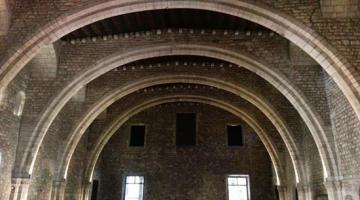 Medieval buildings & monumentsCiutat Vella - Barri GòticThis magnificent hall with solid columns (1359-1370), where they say that Isabel and Fernando received Christopher Columbu
Medieval buildings & monumentsCiutat Vella - Barri GòticThis magnificent hall with solid columns (1359-1370), where they say that Isabel and Fernando received Christopher Columbu



























Add new comment